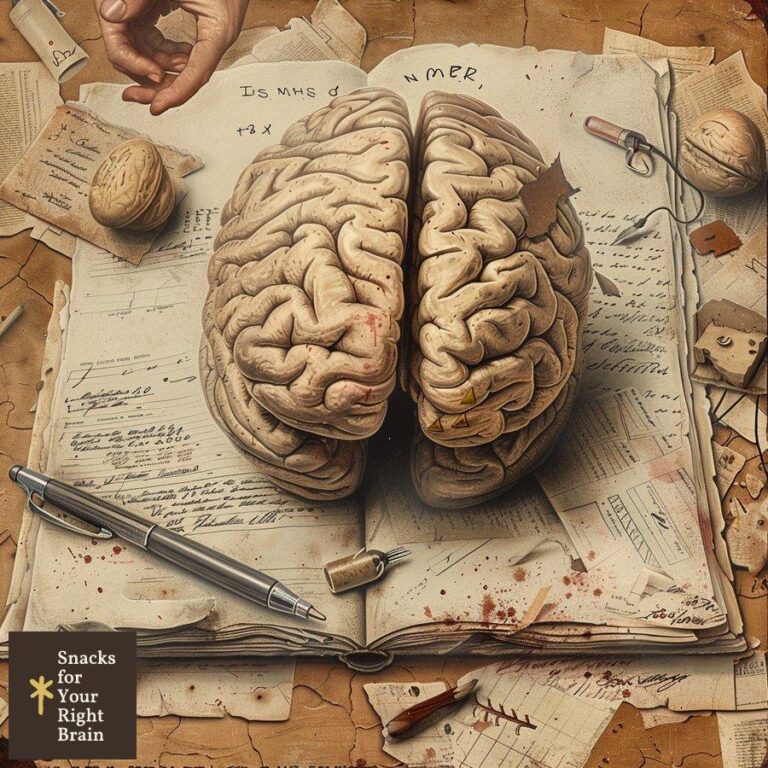Can You Have Too Much Dialogue in a Short Story
Dialogue serves as a powerful tool in short story writing, breathing life into characters and propelling the narrative forward. However, the question of whether a short story can have too much dialogue is a common concern among writers. This article delves into the intricacies of dialogue usage in short fiction, exploring its purpose, potential pitfalls, and strategies for effective implementation.
What is the purpose of dialogue in short stories?
Dialogue in short stories fulfills several essential functions, enriching the narrative and enhancing the reader’s experience. It serves as a vehicle for character development, plot advancement, and the creation of a vivid, immersive world.
Character Development: Through dialogue, writers reveal their characters’ personalities, motivations, and relationships. The way characters speak, their word choices, and their interactions with others provide insights into their backgrounds, beliefs, and emotions.
Plot Advancement: Conversations between characters can drive the story forward, introducing conflicts, revealing crucial information, and setting up future events. Dialogue often serves as a catalyst for action or decision-making within the narrative.
World-Building: Dialogue helps establish the setting and atmosphere of a story. Characters’ speech patterns, colloquialisms, and references can provide context about the time period, location, and social dynamics of the fictional world.
Pacing and Rhythm: Well-crafted dialogue can control the story’s pacing, creating tension, providing moments of relief, or building suspense. The rhythm of conversation can influence the overall flow of the narrative.
Subtext and Nuance: Skilled writers use dialogue to convey underlying meanings, allowing readers to infer information not explicitly stated. This adds depth and complexity to the story, engaging readers on multiple levels.
By understanding these purposes, writers can harness the power of dialogue to create compelling and multi-dimensional short stories. However, it’s crucial to strike a balance between dialogue and other narrative elements to maintain the story’s effectiveness.
How much dialogue is considered excessive?
Determining the appropriate amount of dialogue in a short story is more art than science. While there’s no universal rule dictating the exact percentage of dialogue a story should contain, several factors can help writers gauge whether they’ve crossed into excessive territory.
Story Length: The brevity of short stories necessitates a careful balance of narrative elements. In general, dialogue should not dominate the entire piece, as this can limit other essential aspects of storytelling.
Genre Expectations: Different genres have varying norms for dialogue usage. For instance, mystery stories might rely more heavily on dialogue for revealing clues, while literary fiction often balances dialogue with introspection and description.
Narrative Purpose: Each line of dialogue should serve a specific purpose within the story. If conversations meander without advancing the plot, developing characters, or enhancing the atmosphere, they may be considered excessive.
Reader Engagement: Excessive dialogue can lead to reader fatigue, especially if it’s not broken up by other narrative elements. If pages of uninterrupted conversation dominate the story, it might be time to reassess.
Character Development: While dialogue is an excellent tool for character development, overreliance on it can result in shallow characterization. A balance with internal thoughts, actions, and descriptions often provides a more well-rounded portrayal.
To illustrate the concept of dialogue balance, consider the following table comparing dialogue usage across different short story genres:
| Genre | Typical Dialogue Percentage | Notes |
|---|---|---|
| Literary Fiction | 30-50% | Often balanced with introspection and description |
| Mystery | 40-60% | Higher dialogue for clue revelation and interrogations |
| Romance | 50-70% | Emphasizes character interactions and relationships |
| Science Fiction | 30-50% | Balances dialogue with world-building descriptions |
| Horror | 20-40% | Often relies more on atmosphere and internal monologue |
These percentages are approximate and can vary significantly based on individual writing styles and specific story requirements. The key is to ensure that dialogue enhances rather than overwhelms the narrative.
What are the consequences of overusing dialogue?
Overusing dialogue in a short story can lead to several unintended consequences that may diminish the overall quality and impact of the narrative. Understanding these potential pitfalls can help writers maintain a balanced approach to dialogue usage.
Pacing Issues: Excessive dialogue can slow down the story’s pace, particularly if the conversations don’t drive the plot forward. This can result in a stagnant narrative that fails to engage readers.
Lack of Atmosphere: When dialogue dominates, there’s often little room for descriptive passages that establish the setting and atmosphere. This can leave readers feeling disconnected from the story’s world.
Underdeveloped Characters: While dialogue can reveal character, overreliance on it may lead to shallow characterization. Without internal thoughts, actions, and reactions, characters may feel one-dimensional.
Reduced Tension: Too much dialogue can diffuse tension in critical moments. Sometimes, what’s left unsaid or actions taken can be more powerful than words exchanged.
Reader Fatigue: Long stretches of dialogue without breaks can be tiring for readers, potentially causing them to lose interest or skim through the text.
Limited Narrative Perspective: Overemphasis on dialogue may restrict the narrative perspective, limiting the reader’s access to characters’ inner thoughts and the broader context of the story.
Unrealistic Portrayal: In real life, people don’t constantly engage in lengthy, uninterrupted conversations. Excessive dialogue can make the story feel contrived or unrealistic.
Loss of Subtext: When everything is explicitly stated through dialogue, the story loses the power of subtext and implication, reducing the depth and complexity of the narrative.
To illustrate the impact of dialogue overuse, consider this comparison:
| Aspect | Balanced Dialogue Usage | Excessive Dialogue Usage |
|---|---|---|
| Pacing | Maintains steady flow | Can become sluggish |
| Character Depth | Multi-dimensional | Potentially shallow |
| Atmosphere | Well-established | May feel disconnected |
| Reader Engagement | Sustained interest | Possible fatigue |
| Narrative Perspective | Varied and rich | Limited |
| Realism | Natural feel | May seem contrived |
| Subtext | Present and effective | Often lacking |
By being aware of these potential consequences, writers can make informed decisions about dialogue usage, ensuring that it enhances rather than detracts from their short stories.
How can writers balance dialogue with other narrative elements?

Achieving a harmonious balance between dialogue and other narrative elements is essential for crafting compelling short stories. This balance ensures that the story remains engaging, well-paced, and rich in both character development and plot progression. Here are strategies writers can employ to strike this delicate equilibrium:
Intersperse Action with Dialogue: Break up conversations with character actions, gestures, or environmental descriptions. This technique, known as “action beats,” adds dynamism to the scene and provides visual cues for the reader.
Utilize Internal Monologue: Complement external dialogue with characters’ internal thoughts. This offers deeper insights into their motivations and reactions without relying solely on spoken words.
Employ Narrative Summary: Instead of transcribing every conversation in full, use narrative summary to condense less critical dialogues. This technique helps maintain pacing and allows for more efficient storytelling.
Incorporate Descriptive Passages: Intersperse dialogue with vivid descriptions of the setting, characters’ appearances, or sensory details. This helps ground the conversation in the story’s world and enhances the reader’s immersion.
Vary Sentence Structure: Alternate between dialogue and narrative prose to create rhythm and prevent monotony. This variation keeps readers engaged and allows for a more dynamic reading experience.
Use Dialogue to Reveal Character and Advance Plot: Ensure that each line of dialogue serves a purpose, whether it’s revealing character traits, advancing the plot, or providing necessary information.
Show, Don’t Tell: Instead of having characters explicitly state their feelings or intentions through dialogue, show these aspects through their actions, reactions, and non-verbal cues.
Create Subtext: Develop layers of meaning in conversations by incorporating subtext. This allows for more nuanced character interactions and engages readers on a deeper level.
Employ Silence and Pauses: Remember that what’s left unsaid can be as powerful as spoken words. Use silence, pauses, and characters’ reactions to unspoken thoughts to add depth to interactions.
Balance Exposition and Dialogue: When background information needs to be conveyed, find natural ways to weave it into conversations rather than relying on lengthy expository passages.
By implementing these strategies, writers can create a more balanced and engaging narrative that leverages the strengths of both dialogue and other storytelling elements. This approach results in a richer, more immersive reading experience that captivates audiences from beginning to end.
When might dialogue-heavy short stories be effective?
While balance is generally advisable, there are instances where dialogue-heavy short stories can be particularly effective. Understanding these scenarios can help writers make informed decisions about when to lean more heavily on dialogue in their narratives.
Character-Driven Narratives: Stories that focus primarily on character development and interpersonal relationships often benefit from extensive dialogue. These conversations reveal personalities, motivations, and conflicts directly through characters’ own words.

Dramatic Scenes: Intense confrontations or pivotal moments in a story may rely heavily on dialogue to convey tension, conflict, and emotional intensity. In these cases, the rapid exchange of words can create a powerful dramatic effect.
Comedic Writing: Humor often thrives in dialogue, with witty exchanges and banter serving as the primary vehicle for comedy. Dialogue-heavy scenes can effectively deliver punchlines and create comedic timing.
Mystery and Detective Fiction: Stories in this genre frequently use dialogue to reveal clues, conduct interrogations, and piece together information. The back-and-forth between characters can build suspense and engage readers in the puzzle-solving process.
Experimental or Postmodern Narratives: Some avant-garde or experimental short stories may intentionally push the boundaries of traditional narrative structure, using dialogue as the primary or sole storytelling method.
Cultural or Linguistic Exploration: Stories that aim to capture specific dialects, linguistic patterns, or cultural communication styles may lean heavily on dialogue to authentically represent these elements.
Psychological Depth: In stories exploring complex psychological states or interpersonal dynamics, extensive dialogue can provide deep insights into characters’ minds and relationships.
Real-Time Narratives: Stories that unfold in real-time or cover a very short period might rely more on dialogue to convey information and drive the plot forward quickly.
Script-Like or Play-Inspired Stories: Short stories inspired by theatrical or screenplay formats may naturally incorporate more dialogue, mimicking the structure of these performance-based mediums.
Voice-Driven Narratives: When a story’s primary appeal lies in a unique or compelling narrative voice, dialogue can be an effective way to showcase this voice consistently throughout the piece.
To illustrate when dialogue-heavy approaches might be most effective, consider this comparison:
| Story Type | Dialogue Usage | Effectiveness |
|---|---|---|
| Character Study | High | Very Effective |
| Action-Adventure | Low to Moderate | Less Effective |
| Psychological Thriller | Moderate to High | Effective |
| Nature Description | Low | Less Effective |
| Romantic Comedy | High | Very Effective |
| Historical Fiction | Moderate | Effective |
In these scenarios, dialogue-heavy narratives can enhance the story’s impact, providing a direct and engaging way for readers to connect with characters and immerse themselves in the narrative. However, even in these cases, it’s important to ensure that the dialogue serves the story’s overall purpose and maintains reader engagement throughout.
How can authors edit dialogue-heavy drafts?
Editing dialogue-heavy drafts is a crucial step in refining a short story and ensuring that the conversations serve the narrative effectively. Here are strategies authors can employ to polish dialogue-centric drafts:
Identify Purpose: Review each dialogue exchange and determine its purpose within the story. Does it advance the plot, reveal character, or provide necessary information? If a conversation doesn’t serve a clear purpose, consider revising or removing it.
Trim Excess: Look for redundant or unnecessary dialogue. Often, conversations can be tightened by removing filler words, repetitive statements, or exchanges that don’t add value to the narrative.
Add Narrative Elements: Intersperse dialogue with descriptive passages, action beats, or internal thoughts. This breaks up long stretches of conversation and provides a more balanced reading experience.
Enhance Subtext: Review dialogues for opportunities to incorporate subtext. Instead of having characters explicitly state their feelings or intentions, find ways to convey these through subtle cues or implications in their speech.
Vary Dialogue Tags: While “said” is often the best choice for dialogue tags, occasional use of more descriptive verbs can add variety and convey character emotions or actions. However, use these sparingly to avoid overwriting.
Ensure Distinct Voices: Check that each character has a unique voice. This includes specific speech patterns, vocabulary choices, or verbal tics that distinguish them from other characters.
Balance Exposition: If dialogue is being used to convey background information, ensure it feels natural and not forced. Look for opportunities to show this information through action or description instead.
Create Tension: Examine dialogues for opportunities to build tension or conflict. This can be achieved through disagreements, misunderstandings, or characters withholding information from each other.
Use Silence Effectively: Add moments of silence or non-verbal reactions to break up dialogue and create tension or emphasis.
Read Aloud: Reading the dialogue aloud can help identify areas where the conversation feels unnatural or stilted. This technique can also help in refining the rhythm and flow of the exchanges.
Consider Pacing: Evaluate how the dialogue affects the overall pacing of the story. If conversations are slowing down critical moments, consider condensing them or interspersing them with action.
Eliminate On-the-Nose Dialogue: Look for instances where characters are stating the obvious or explaining things they would realistically already know. This type of dialogue often feels unnatural and can be replaced with more subtle communication.
Check for Consistency: Ensure that characters’ dialogue remains consistent with their established personalities and backgrounds throughout the story.
By applying these editing techniques, authors can refine dialogue-heavy drafts, creating more engaging and effective short stories. The goal is to maintain the strengths of dialogue while addressing any weaknesses that may detract from the overall narrative impact.
What can we learn from masterful use of dialogue in short fiction?
Studying the masterful use of dialogue in short fiction provides valuable insights for writers aiming to enhance their own dialogue-writing skills. By examining the techniques employed by accomplished authors, we can discern effective strategies for crafting compelling conversations within the constraints of short stories.
Economy of Words: Master storytellers demonstrate the power of concise dialogue. They convey maximum meaning with minimal words, allowing each line to carry significant weight in character development or plot advancement.
Subtext and Implication: Skilled writers often use dialogue to convey underlying meanings, emotions, or conflicts that aren’t explicitly stated. This technique adds depth to characters and engages readers on a more profound level.
Distinctive Character Voices: In masterful short fiction, each character possesses a unique voice that reflects their personality, background, and current state of mind. This distinctiveness helps readers differentiate between characters and understand them more deeply.
Natural Flow: Expert dialogue writers create conversations that feel authentic and unforced. They mimic the rhythms of real speech while still maintaining the focus and purpose required in short fiction.
Integration with Narrative: Masterful dialogue is seamlessly integrated with other narrative elements. It doesn’t stand alone but works in concert with description, action, and internal monologue to create a cohesive story.
Revealing Information Gradually: Skilled authors use dialogue to reveal information in a natural, piecemeal fashion rather than dumping exposition all at once. This technique maintains suspense and reader engagement.
Creating Tension: Masters of dialogue understand how to use conversations to build and sustain tension. This might involve characters talking at cross-purposes, hiding information, or engaging in verbal sparring.
Use of Silence and Pauses: Accomplished writers recognize the power of what’s left unsaid. They use silences, pauses, and characters’ reactions to unspoken thoughts to add depth to interactions.
Balancing Direct and Indirect Dialogue: Masterful short fiction often demonstrates a skillful balance between direct quotes and reported speech, using each to its best advantage within the story’s constraints.
Advancing Plot Through Conversation: In well-crafted short stories, dialogue often serves multiple purposes simultaneously, advancing the plot while also revealing character and setting.
Cultural and Historical Authenticity: When appropriate, master writers imbue dialogue with period-specific or culturally relevant language, adding authenticity to the story’s setting.
Emotional Resonance: Skillful dialogue in short fiction often carries strong emotional undercurrents, allowing readers to connect deeply with characters in a limited space.
To illustrate these points, let’s examine how different aspects of masterful dialogue contribute to a story’s effectiveness:
| Dialogue Aspect | Contribution to Story |
|---|---|
| Economy of Words | Maintains pacing, increases impact |
| Subtext | Adds depth, engages readers |
| Distinctive Voices | Enhances characterization |
| Natural Flow | Increases realism, reader immersion |
| Integration with Narrative | Creates cohesive storytelling |
| Gradual Information Reveal | Maintains suspense, reader interest |
| Tension Creation | Builds suspense, engages readers |
| Use of Silence | Adds depth, emphasizes key moments |
| Direct/Indirect Balance | Provides variety, controls pacing |
| Plot Advancement | Maximizes efficiency in storytelling |
| Cultural Authenticity | Enhances setting, character depth |
| Emotional Resonance | Strengthens reader connection |
By studying and emulating these techniques, writers can significantly improve their dialogue writing skills, creating more engaging and impactful short stories.
How does genre influence dialogue usage in short stories?

Genre plays a significant role in shaping dialogue usage within short stories. Different genres have distinct conventions, expectations, and narrative focuses that influence how dialogue is employed. Understanding these genre-specific considerations can help writers craft more effective and appropriate dialogue for their chosen genre.
Literary Fiction: In literary fiction, dialogue often serves to reveal complex character psychologies and explore themes. It tends to be more nuanced, with a focus on subtext and symbolic meaning. Conversations may be introspective and philosophical, reflecting the genre’s emphasis on character development and thematic depth.
Mystery and Detective Fiction: Dialogue in this genre frequently functions as a tool for revealing clues, conducting interrogations, and piecing together information. Conversations often drive the plot forward and maintain suspense. Sharp, witty exchanges between detectives and suspects are common, as are red herrings embedded in dialogue.
Science Fiction and Fantasy: These genres often use dialogue to explain complex world-building elements or technological concepts. Characters might discuss unfamiliar terms or ideas, requiring a balance between exposition and natural conversation. Dialogue can also reflect unique linguistic patterns or communication styles of alien species or fantasy races.
Romance: Romantic short stories typically feature dialogue-heavy scenes that focus on character interactions and relationship development. Banter, flirtation, and emotionally charged conversations are common. Dialogue often serves to build tension and chemistry between characters.
Horror: In horror short stories, dialogue can be used to build suspense and create an atmosphere of dread. Characters might discuss ominous events or supernatural occurrences. Silence and what’s left unsaid can be as important as spoken words in creating tension.
Historical Fiction: Dialogue in historical fiction must strike a balance between period authenticity and readability for modern audiences. It often includes era-specific terminology or speech patterns to establish the historical setting while still remaining accessible.
Thriller: Thrillers often employ fast-paced, tension-filled dialogue. Conversations may be clipped and urgent, reflecting the high-stakes situations characters find themselves in. Dialogue frequently serves to ratchet up suspense and drive the plot forward.
Comedy: In comedic short stories, dialogue is often the primary vehicle for humor. Witty exchanges, misunderstandings, and clever wordplay are common features. The timing and delivery of dialogue are crucial in achieving comedic effect.
Young Adult Fiction: Dialogue in YA short stories often reflects the speech patterns and concerns of younger characters. It may be more colloquial and deal with themes relevant to adolescent experiences. Character voice is particularly important in distinguishing different teen personalities.
Experimental Fiction: In experimental short stories, traditional dialogue conventions may be intentionally subverted. This could involve unconventional formatting, stream-of-consciousness speech, or the blending of dialogue with other narrative elements.
To illustrate how dialogue usage varies across genres, consider the following comparison:
| Genre | Typical Dialogue Characteristics | Primary Functions |
|---|---|---|
| Literary Fiction | Nuanced, subtextual | Character exploration, thematic development |
| Mystery | Interrogative, revealing | Clue dissemination, plot advancement |
| Sci-Fi/Fantasy | Explanatory, world-building | Concept introduction, universe expansion |
| Romance | Emotional, flirtatious | Relationship development, character chemistry |
| Horror | Tense, ominous | Atmosphere building, suspense creation |
| Historical Fiction | Period-authentic, informative | Setting establishment, historical context |
| Thriller | Urgent, high-stakes | Tension building, plot propulsion |
| Comedy | Witty, playful | Humor delivery, character quirks |
| Young Adult | Colloquial, relatable | Character voice, adolescent themes |
| Experimental | Unconventional, boundary-pushing | Narrative innovation, reader challenge |
By understanding these genre-specific dialogue considerations, writers can tailor their approach to best serve their chosen genre and meet reader expectations while still maintaining their unique voice and style.
What techniques can improve the quality of dialogue?
Improving the quality of dialogue in short stories involves employing various techniques that enhance authenticity, depth, and narrative effectiveness. By mastering these techniques, writers can create more engaging and impactful conversations that resonate with readers.
Character Voice Differentiation: Develop distinct voices for each character based on their background, personality, and current emotional state. This includes unique speech patterns, vocabulary choices, and verbal tics.
![]()
Subtext Implementation: Layer conversations with underlying meanings, allowing characters to communicate more than what’s explicitly stated. This adds depth and engages readers in interpreting character motivations and relationships.
Action Beat Integration: Intersperse dialogue with character actions, gestures, or environmental interactions. This technique, known as “action beats,” adds visual dimension to conversations and breaks up long stretches of dialogue.
Dialogue Tag Variation: While “said” is often the most unobtrusive tag, occasional use of more descriptive verbs can add variety and convey character emotions or actions. Use these sparingly to avoid overwriting.
Contractions and Informal Speech: Unless a character’s formal speech is intentional, use contractions and colloquialisms to make dialogue sound more natural and less stilted.
Interruptions and Overlapping: Incorporate realistic conversation elements like interruptions, characters talking over each other, or unfinished sentences to add authenticity and tension.
Silence and Pauses: Utilize moments of silence or hesitation to build tension, imply unspoken thoughts, or allow for reader interpretation.
Subversion of Expectations: Occasionally have characters respond in unexpected ways to create surprise or reveal hidden aspects of their personality.
Conflict and Disagreement: Introduce elements of conflict or disagreement in dialogues to create tension and reveal character dynamics.
Cultural and Historical Authenticity: When appropriate, incorporate period-specific language or cultural references to enhance the story’s setting and character backgrounds.
Avoidance of Exposition Dumps: Instead of using dialogue for lengthy explanations, reveal information gradually through natural conversation and context.
Rhythm and Pacing: Vary the length and structure of dialogue exchanges to create rhythm and control pacing. Short, punchy exchanges can increase tension, while longer conversations can slow the pace for important revelations.
Nonverbal Communication: Include descriptions of body language, facial expressions, and tone of voice to complement spoken words and convey additional meaning.
Dialect and Accent Use: When incorporating dialects or accents, do so judiciously and consistently. Focus on key phrases or speech patterns rather than phonetic spelling, which can be distracting.
Humor and Wit: Where appropriate, inject humor or witty exchanges to lighten the mood, reveal character, or provide moments of relief in tense situations.
To illustrate the impact of these techniques, consider the following comparison of basic and improved dialogue:
| Basic Dialogue | Improved Dialogue |
|---|---|
| “I don’t want to go,” said John. “Why not?” asked Mary. | John crossed his arms, avoiding Mary’s gaze. “I don’t wanna go.” Mary’s eyebrows shot up. “Why not? This isn’t like you.” |
| “I’m angry because you lied to me,” Sarah said. | Sarah’s fingers curled into fists. “You lied to me.” The words hung in the air, heavy with unspoken accusations. |
| “Can you explain how the machine works?” Tom asked. | Tom eyed the contraption warily. “So, uh, how does this thing work? Without blowing us to kingdom come, preferably.” |
By implementing these techniques, writers can elevate their dialogue from mere conversation to a powerful tool for character development, plot advancement, and reader engagement. The key is to practice these methods consistently, always keeping in mind the overall narrative goals and the unique voices of the characters.
How does dialogue pacing affect reader engagement?
Dialogue pacing plays a crucial role in maintaining reader engagement throughout a short story. The rhythm and flow of conversations can significantly impact the story’s overall pacing, tension, and emotional resonance. Understanding and skillfully manipulating dialogue pacing can enhance the reader’s experience and keep them invested in the narrative.
Tension and Suspense: Quick, short exchanges can build tension and create a sense of urgency. This rapid-fire dialogue is particularly effective in high-stakes situations or climactic moments.
Emotional Depth: Slower, more deliberate dialogue pacing allows for deeper emotional exploration. Longer exchanges give characters time to express complex feelings or grapple with difficult decisions.
Character Development: Varying the pace of dialogue for different characters can reveal aspects of their personalities. A character who speaks in short, clipped sentences might be perceived differently from one who engages in lengthy monologues.
Plot Advancement: The pace of dialogue can control how quickly information is revealed to the reader. Faster exchanges can rapidly move the plot forward, while slower conversations allow for more detailed exposition.
Reader Immersion: Well-paced dialogue helps maintain the reader’s attention and immersion in the story world. Alternating between faster and slower paced exchanges prevents monotony and keeps the reader engaged.
Mood and Atmosphere: The rhythm of dialogue contributes to the overall mood of a scene. Staccato exchanges can create a tense or frantic atmosphere, while languid conversations might evoke a sense of calm or melancholy.
Realism and Authenticity: Natural variations in dialogue pacing mimic real-life conversations, lending authenticity to character interactions.
Emphasis and Impact: Slowing down dialogue at key moments can emphasize important revelations or emotional beats, allowing them to resonate more strongly with the reader.
Cognitive Load: Balancing dialogue pacing helps manage the reader’s cognitive load. Intense, rapid exchanges can be interspersed with slower moments to give readers time to process information.
Genre Expectations: Different genres often have distinct dialogue pacing norms. For example, thrillers might favor quicker exchanges, while literary fiction might employ more measured pacing.
To illustrate how dialogue pacing affects reader engagement, consider this comparison:
| Pacing Type | Effect on Reader | Best Used For |
|---|---|---|
| Rapid | Increases tension, creates urgency | Action scenes, arguments, time-sensitive situations |
| Measured | Allows for deeper exploration, builds anticipation | Emotional revelations, complex discussions, character development |
| Varied | Maintains interest, prevents monotony | Throughout the story to create rhythm and flow |
| Slow | Emphasizes important moments, allows for reflection | Pivotal scenes, introspective moments, building atmosphere |
Skillful manipulation of dialogue pacing involves:
Rhythm Variation: Alternating between quick exchanges and more prolonged conversations to create a dynamic reading experience.
Contextual Appropriateness: Matching the dialogue pace to the scene’s emotional tone and narrative requirements.
Character-Specific Pacing: Allowing each character’s unique speech patterns to influence the overall rhythm of conversations.
Strategic Pauses: Incorporating moments of silence or hesitation to build tension or allow for reader reflection.
Interruptions and Overlaps: Using interruptions or characters talking over each other to create a sense of urgency or conflict.
Paragraph Structure: Utilizing paragraph breaks and formatting to visually represent the pace of dialogue on the page.
By mastering the art of dialogue pacing, writers can create more engaging and impactful short stories that keep readers invested from beginning to end. The key is to view dialogue not just as a means of conveying information, but as a rhythmic tool that can shape the reader’s emotional and cognitive experience of the narrative.
What role does subtext play in short story dialogue?
Subtext plays a vital role in elevating the quality and depth of dialogue in short stories. It refers to the underlying meaning or intention behind what characters say, often contrasting with or adding layers to their explicit words. Effective use of subtext can significantly enhance character development, plot complexity, and reader engagement within the limited confines of a short story.
Depth of Character: Subtext allows writers to reveal complex character motivations, fears, and desires without explicitly stating them. This adds depth to characters, making them more realistic and intriguing.
Conflict Enhancement: By creating a disparity between what characters say and what they mean, subtext can heighten tension and conflict in conversations.
Emotional Resonance: Subtextual dialogue often carries strong emotional undercurrents, allowing readers to connect more deeply with characters’ inner struggles.
Plot Advancement: Subtext can foreshadow future events or reveal important plot information in subtle ways, maintaining suspense and reader interest.
Realism: In real life, people often communicate indirectly or hide their true feelings. Subtext in dialogue mimics this natural human behavior, adding authenticity to character interactions.
Reader Engagement: By requiring readers to interpret meaning beyond the surface level, subtext encourages active engagement with the text.
Efficiency: In the limited space of a short story, subtext allows writers to convey complex ideas and relationships efficiently, without relying on lengthy explanations.
Tone and Atmosphere: Subtextual dialogue can contribute to the overall tone of a story, creating an atmosphere of unease, romance, or mystery.
Character Relationships: The use of subtext can reveal the true nature of relationships between characters, often highlighting power dynamics or unspoken feelings.
Cultural and Social Commentary: Subtext can be used to explore broader themes or social issues without making the story feel didactic.
To illustrate the power of subtext in dialogue, consider these examples:
| Dialogue Without Subtext | Dialogue With Subtext |
|---|---|
| “I don’t want to go to the party.” | “I’m sure it’ll be great. I just remembered I have to wash my hair tonight.” |
| “I love you too.” | “You know I care about you.” |
| “Can you help me with this project?” | “I heard you’re the expert on this kind of thing.” |
Techniques for incorporating subtext in dialogue include:
Indirect Responses: Having characters respond to the subtext of a question rather than its literal meaning.
Changing the Subject: Characters abruptly shifting topics to avoid uncomfortable truths or hide their true feelings.
Sarcasm and Irony: Using tone to convey meanings opposite to the literal words spoken.
Loaded Questions: Asking questions that carry implied accusations or judgments.
Silence and Hesitation: Using pauses or what’s left unsaid to convey meaning.
Body Language Contradictions: Describing physical actions or expressions that contradict spoken words.
Cultural or Personal References: Incorporating references that carry specific meaning to certain characters.
Euphemisms and Metaphors: Using figurative language to express ideas indirectly.
Effective use of subtext in short story dialogue requires:
Character Understanding: A deep knowledge of characters’ motivations, fears, and desires.
Context Awareness: Considering the situation and relationship dynamics in which the dialogue occurs.
Restraint: Avoiding the temptation to over-explain, trusting readers to interpret meaning.
Consistency: Ensuring that subtextual elements align with established character traits and plot developments.
Balance: Combining subtextual dialogue with more direct communication to maintain clarity and pacing.
By mastering the use of subtext in dialogue, short story writers can create richer, more nuanced narratives that resonate deeply with readers. This technique allows for complex character and plot development within the constraints of the short story format, elevating the overall quality of the work.
How can dialogue reveal character without exposition?
Dialogue serves as a powerful tool for character revelation in short stories, allowing writers to show rather than tell readers about their characters’ personalities, backgrounds, and motivations. By crafting dialogue that naturally reveals character traits, writers can avoid clunky exposition and create more engaging, dynamic narratives.
Word Choice and Vocabulary: A character’s choice of words can reveal their education level, social background, or profession. For example, a scientist might use technical jargon, while a street-smart character might use more colloquial language.
Speech Patterns and Rhythm: The cadence and structure of a character’s speech can indicate their personality. Short, clipped sentences might suggest impatience or efficiency, while long, flowing sentences could indicate a more contemplative nature.
Accent and Dialect: When used judiciously, accents and dialects can provide information about a character’s geographical or cultural background.
Topics of Conversation: What a character chooses to talk about (or avoid talking about) can reveal their interests, priorities, and concerns.
Reactions to Others: How a character responds to what others say can reveal their temperament, biases, and relationships.
Humor and Wit: A character’s sense of humor, or lack thereof, can be a window into their personality and worldview.
Subtext and Implications: What a character implies but doesn’t directly say can reveal hidden motivations or feelings.
Lies and Evasions: When characters lie or evade questions, it can reveal insecurities, hidden agendas, or past traumas.
Repetition and Verbal Tics: Recurring phrases or speech habits can indicatea character’s thought patterns or emotional state.
Formality and Tone: The level of formality in a character’s speech can indicate their relationship to others or their social status.
Cultural References: The cultural touchstones a character mentions can reveal their age, background, and interests.
Emotional Responses: How a character expresses emotions through dialogue can reveal their temperament and emotional intelligence.
To illustrate how dialogue can reveal character without exposition, consider these examples:
| Character Trait | Revealing Dialogue |
|---|---|
| Arrogance | “Of course I can solve it. Who do you think you’re talking to?” |
| Insecurity | “I mean, I could try, if you really think I should… unless you’d rather ask someone else?” |
| Compassion | “Hey, take your time. We’ve all been there, and it’s okay to feel overwhelmed.” |
| Impatience | “Look, are we doing this or not? I haven’t got all day.” |
Effective character revelation through dialogue requires:
Consistency: Ensuring that a character’s dialogue aligns with their established traits and background.
Subtlety: Avoiding heavy-handed characterization by allowing traits to emerge naturally through conversation.
Context: Considering the situation and relationships that influence how a character speaks.
Development: Showing how a character’s dialogue might change over time as they grow or face challenges.
Individuality: Crafting unique voices for each character to distinguish them from one another.
By mastering these techniques, writers can create vivid, multi-dimensional characters without relying on explicit exposition, enhancing the overall quality and engagement of their short stories.
What are effective alternatives to dialogue in short stories?
While dialogue is a powerful tool in short story writing, there are several effective alternatives that can convey information, develop characters, and advance the plot. These techniques can provide variety in storytelling and are particularly useful when dialogue might feel forced or unnecessary.
Internal Monologue: Allowing readers direct access to a character’s thoughts can reveal their inner world, motivations, and conflicts without the need for spoken words.
Action and Behavior: Describing a character’s actions, gestures, and body language can effectively convey their emotions and intentions.
Environmental Description: The way a character interacts with or perceives their environment can reveal much about their state of mind and personality.
Flashbacks: Brief glimpses into a character’s past can provide context and depth without relying on expository dialogue.
Letters or Diary Entries: These written forms of communication can reveal character thoughts and advance the plot in a more intimate way.
Narrative Summary: Summarizing events or conversations can efficiently convey information without transcribing entire dialogues.
Sensory Details: Describing what a character sees, hears, smells, tastes, or feels can immerse readers in the story world and reveal character perspective.
Symbolic Objects or Actions: Using objects or actions as symbols can convey complex ideas or emotions without explicit dialogue.
Stream of Consciousness: This technique can provide deep insight into a character’s thought processes and emotional state.
Non-Verbal Communication: Focusing on characters’ facial expressions, gestures, and body language can convey meaning without words.
Silence and Absence: Sometimes, what’s not said or who’s not present can be as revealing as dialogue.
To illustrate the effectiveness of these alternatives, consider this comparison:
| Dialogue | Alternative Technique | Example |
|---|---|---|
| “I’m so angry at him!” | Action | She slammed the door, her hands shaking as she turned the lock. |
| “I miss home so much.” | Sensory Detail | The scent of freshly baked bread wafted through the air, bringing tears to her eyes as memories of her mother’s kitchen flooded back. |
| “I don’t trust him.” | Body Language | His eyes narrowed as he watched the newcomer, his hand instinctively moving to cover his wallet. |
Implementing these alternatives effectively involves:
Balancing Techniques: Using a mix of dialogue and alternative methods to create a dynamic narrative.
Choosing Appropriate Methods: Selecting techniques that best suit the tone, pacing, and focus of the story.
Maintaining Clarity: Ensuring that the chosen alternatives clearly convey the intended information or emotion.
Character Consistency: Aligning alternative techniques with established character traits and behaviors.
Pacing Consideration: Using alternatives to control the story’s rhythm and flow, varying between introspective moments and action.
By skillfully incorporating these alternatives to dialogue, writers can create rich, multi-layered short stories that engage readers on multiple levels. These techniques allow for diverse storytelling methods within the concise format of short fiction, enhancing the overall narrative experience.






